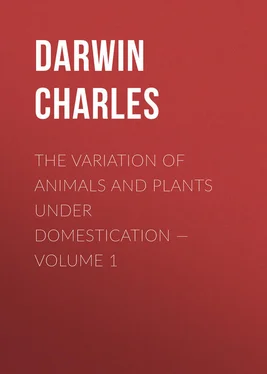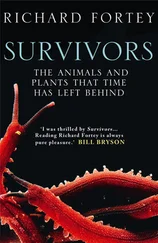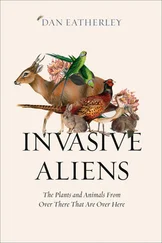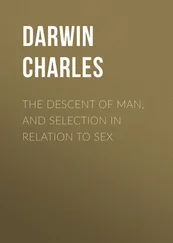Charles Darwin - The Variation of Animals and Plants under Domestication — Volume 1
Здесь есть возможность читать онлайн «Charles Darwin - The Variation of Animals and Plants under Domestication — Volume 1» — ознакомительный отрывок электронной книги совершенно бесплатно, а после прочтения отрывка купить полную версию. В некоторых случаях можно слушать аудио, скачать через торрент в формате fb2 и присутствует краткое содержание. Жанр: foreign_antique, foreign_prose, на английском языке. Описание произведения, (предисловие) а так же отзывы посетителей доступны на портале библиотеки ЛибКат.
- Название:The Variation of Animals and Plants under Domestication — Volume 1
- Автор:
- Жанр:
- Год:неизвестен
- ISBN:нет данных
- Рейтинг книги:5 / 5. Голосов: 1
-
Избранное:Добавить в избранное
- Отзывы:
-
Ваша оценка:
- 100
- 1
- 2
- 3
- 4
- 5
The Variation of Animals and Plants under Domestication — Volume 1: краткое содержание, описание и аннотация
Предлагаем к чтению аннотацию, описание, краткое содержание или предисловие (зависит от того, что написал сам автор книги «The Variation of Animals and Plants under Domestication — Volume 1»). Если вы не нашли необходимую информацию о книге — напишите в комментариях, мы постараемся отыскать её.
The Variation of Animals and Plants under Domestication — Volume 1 — читать онлайн ознакомительный отрывок
Ниже представлен текст книги, разбитый по страницам. Система сохранения места последней прочитанной страницы, позволяет с удобством читать онлайн бесплатно книгу «The Variation of Animals and Plants under Domestication — Volume 1», без необходимости каждый раз заново искать на чём Вы остановились. Поставьте закладку, и сможете в любой момент перейти на страницу, на которой закончили чтение.
Интервал:
Закладка:
This magnificent, well known species was domesticated in Switzerland during the Neolithic period; even at this early period it varied a little, having apparently been crossed with other races. Some of the larger races on the Continent, as the Friesland, etc., and the Pembroke race in England, closely resemble in essential structure B. primigenius, and no doubt are its descendants. This is likewise the opinion of Nilsson. Bos primigenius existed as a wild animal in Caesar's time, and is now semi-wild, though much degenerated in size, in the park of Chillingham; for I am informed by Professor Rutimeyer, to whom Lord Tankerville sent a skull, that the Chillingham cattle are less altered from the true primigenius type than any other known breed. (3/38. See also Rutimeyer 'Beitrage pal. Gesch. der Wiederkauer' Basel 1865 s. 54.)
Bos trochoceros.
This form is not included in the three species above mentioned, for it is now considered by Rutimeyer to be the female of an early domesticated form of B. primigenius, and as the progenitor of his frontosus race. I may add that specific names have been given to four other fossil oxen, now believed to be identical with B. primigenius. (3/39. Pictet 'Palaeontologie' tome 1 page 365 2nd edition. With respect to B. trochoceros see Rutimeyer 'Zahmen Europ. Rindes' 1866 s. 26.)
Bos longifrons (or brachyceros) of Owen.
This very distinct species was of small size, and had a short body with fine legs. According to Boyd Dawkins (3/40. W. Boyd Dawkins on the British Fossil Oxen 'Journal of the Geolog. Soc.' August 1867 page 182. Also 'Proc. Phil. Soc. of Manchester' November 14, 1871 and 'Cave Hunting' 1875 page 27, 138.) it was introduced as a domesticated animal into Britain at a very early period, and supplied food to the Roman legionaries. (3/41. 'British Pleistocene Mammalia' by W.B. Dawkins and W.A. Sandford 1866 page 15.) Some remains have been found in Ireland in certain crannoges, of which the dates are believed to be from 843-933 A.D. (3/42. W.R. Wilde 'An Essay on the Animal Remains, etc. Royal Irish Academy' 1860 page 29. Also 'Proc. of R. Irish Academy' 1858 page 48.) It was also the commonest form in a domesticated condition in Switzerland during the earliest part of the Neolithic period. Professor Owen (3/43. 'Lecture: Royal Institution of G. Britain' May 2, 1856 page 4. 'British Fossil Mammals' page 513.) thinks it probable that the Welsh and Highland cattle are descended from this form; as likewise is the case, according to Rutimeyer, with some of the existing Swiss breeds. These latter are of different shades of colour from light- grey to blackish-brown, with a lighter stripe along the spine, but they have no pure white marks. The cattle of North Wales and the Highlands, on the other hand, are generally black or dark-coloured.
Bos frontosus of Nilsson.
This species is allied to B. longifrons, and, according to the high authority of Mr. Boyd Dawkins, is identical with it, but in the opinion of some judges is distinct. Both co-existed in Scania during the same late geological period (3/44. Nilsson in 'Annals and Mag. of Nat. Hist.' 1849 volume 4 page 354.), and both have been found in the Irish crannoges. (3/45. See W.R. Wilde ut supra; and Mr. Blyth in 'Proc. Irish Academy' March 5, 1864.) Nilsson believes that his B. frontosus may be the parent of the mountain cattle of Norway, which have a high protuberance on the skull between the base of the horns. As Professor Owen and others believe that the Scotch Highland cattle are descended from his B. longifrons, it is worth notice that a capable judge (3/46. Laing 'Tour in Norway' page 110.) has remarked that he saw no cattle in Norway like the Highland breed, but that they more nearly resembled the Devonshire breed.]
On the whole we may conclude, more especially from the researches of Boyd Dawkins, that European cattle are descended from two species; and there is no improbability in this fact, for the genus Bos readily yields to domestication. Besides these two species and the zebu, the yak, the gayal, and the arni (3/47. Isid. Geoffroy Saint-Hilaire 'Hist. Nat. Gen.' tome 3, 96.) (not to mention the buffalo or genus Bubalus) have been domesticated; making altogether six species of Bos. The zebu and the two European species are now extinct in a wild state. Although certain races of cattle were domesticated at a very ancient period in Europe, it does not follow that they were first domesticated here. Those who place much reliance on philology argue that they were imported from the East. (3/48. Idem tome 3 pages 82, 91.) It is probable that they originally inhabited a temperate or cold climate, but not a land long covered with snow; for our cattle, as we have seen in the chapter on Horses, have not the instinct of scraping away the snow to get at the herbage beneath. No one could behold the magnificent wild bulls on the bleak Falkland Islands in the southern hemisphere, and doubt about the climate being admirably suited to them. Azara has remarked that in the temperate regions of La Plata the cows conceive when two years old, whilst in the much hotter country of Paraguay they do not conceive till three years old; "from which fact," as he adds, "one may conclude that cattle do not succeed so well in warm countries." (3/49. 'Quadrupedes du Paraguay' tome 2 page 360.)
Bos primigenius and longifrons have been ranked by nearly all palaeontologists as distinct species; and it would not be reasonable to take a different view simply because their domesticated descendants now intercross with the utmost freedom. All the European breeds have so often been crossed both intentionally and unintentionally, that, if any sterility had ensued from such unions, it would certainly have been detected. As zebus inhabit a distant and much hotter region, and as they differ in so many characters from our European cattle, I have taken pains to ascertain whether the two forms are fertile when crossed. The late Lord Powis imported some zebus and crossed them with common cattle in Shropshire; and I was assured by his steward that the cross-bred animals were perfectly fertile with both parent-stocks. Mr. Blyth informs me that in India hybrids, with various proportions of either blood, are quite fertile; and this can hardly fail to be known, for in some districts (3/50. Walther 'Das Rindvieh' 1817 s. 30.) the two species are allowed to breed freely together. Most of the cattle which were first introduced into Tasmania were humped, so that at one time thousands of crossed animals existed there; and Mr. B. O'Neile Wilson, M.A., writes to me from Tasmania that he has never heard of any sterility having been observed. He himself formerly possessed a herd of such crossed cattle, and all were perfectly fertile; so much so, that he cannot remember even a single cow failing to calve. These several facts afford an important confirmation of the Pallasian doctrine that the descendants of species which when first domesticated would if crossed have been in all probability in some degree sterile, become perfectly fertile after a long course of domestication. In a future chapter we shall see that this doctrine throws some light on the difficult subject of Hybridism.
I have alluded to the cattle in Chillingham Park, which, according to Rutimeyer, have been very little changed from the Bos primigenius type. This park is so ancient that it is referred to in a record of the year 1220. The cattle in their instincts and habits are truly wild. They are white, with the inside of the ears reddish-brown, eyes rimmed with black, muzzles brown, hoofs black, and horns white tipped with black. Within a period of thirty-three years about a dozen calves were born with "brown and blue spots upon the cheeks or necks; but these, together with any defective animals, were always destroyed." According to Bewick, about the year 1770 some calves appeared with black ears; but these were also destroyed by the keeper, and black ears have not since reappeared. The wild white cattle in the Duke of Hamilton's park, where I have heard of the birth of a black calf, are said by Lord Tankerville to be inferior to those at Chillingham. The cattle kept until the year 1780 by the Duke of Queensberry, but now extinct, had their ears, muzzle, and orbits of the eyes black. Those which have existed from time immemorial at Chartley, closely resemble the cattle at Chillingham, but are larger, "with some small difference in the colour of the ears." "They frequently tend to become entirely black; and a singular superstition prevails in the vicinity that, when a black calf is born, some calamity impends over the noble house of Ferrers. All the black calves are destroyed." The cattle at Burton Constable in Yorkshire, now extinct, had ears, muzzle, and the tip of the tail black. Those at Gisburne, also in Yorkshire, are said by Bewick to have been sometimes without dark muzzles, with the inside alone of the ears brown; and they are elsewhere said to have been low in stature and hornless. (3/51. I am much indebted to the present Earl of Tankerville for information about his wild cattle; and for the skull which was sent to Prof. Rutimeyer. The fullest account of the Chillingham cattle is given by Mr. Hindmarsh, together with a letter by the late Lord Tankerville, in 'Annals and Mag. of Nat. Hist.' volume 2 1839 page 274. See Bewick 'Quadrupeds' 2nd edition 1791 page 35 note. With respect to those of the Duke of Queensberry see Pennant 'Tour in Scotland' page 109. For those of Chartley, see Low 'Domesticated Animals of Britain' 1845 page 238. For those of Gisburne see Bewick 'Quadrupeds' and 'Encyclop. of Rural Sports' page 101.)
Читать дальшеИнтервал:
Закладка:
Похожие книги на «The Variation of Animals and Plants under Domestication — Volume 1»
Представляем Вашему вниманию похожие книги на «The Variation of Animals and Plants under Domestication — Volume 1» списком для выбора. Мы отобрали схожую по названию и смыслу литературу в надежде предоставить читателям больше вариантов отыскать новые, интересные, ещё непрочитанные произведения.
Обсуждение, отзывы о книге «The Variation of Animals and Plants under Domestication — Volume 1» и просто собственные мнения читателей. Оставьте ваши комментарии, напишите, что Вы думаете о произведении, его смысле или главных героях. Укажите что конкретно понравилось, а что нет, и почему Вы так считаете.












